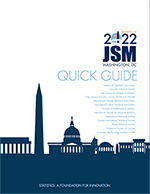Back
CSP2022
ASA
Practical Impact of Sample Sizes for Auditing
Wednesday, February 2, 2022
-
Zachary Rhyne
Ryan, LLC
Statistical sampling is a generally accepted accounting and audit technique widely used in tax, internal audit, financial statement auditing, and many other regulatory and assurance functions. Even with this broad use and deep acceptance of sampling, there can be a wide range of practices, a lack of standardization, and scarce practical guidance. We will explore the impact of sample sizes in stratified random sampling ranging from the unconventional small (nh=2) to the common (e.g., nh=32) sample sizes to determine when approximating normality is attained and what statistical attributes the samples have and require to provide assurance on audit and tax populations. In discussing sample size impact, this will be an observational review and does not seek a theoretical approach, but actual data driven analysis.

